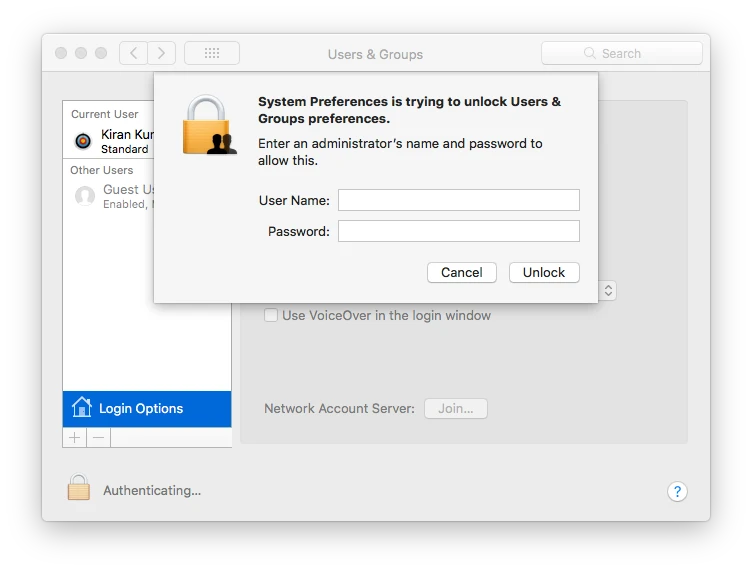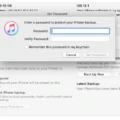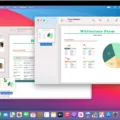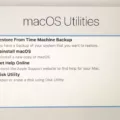System Preferences is a vital component of the macOS operating system, as it allows users to customize and configure various settings on their Mac. However, there are instances where users may encounter issues with System Preferences not opening. In this article, we will explore the possible reasons behind this problem and provide potential solutions to help you resolve it.
One of the common causes for System Preferences not opening is third-party software conflicts. Certain applications or extensions may interfere with the operation of System Preferences, preventing it from launching properly. To isolate this issue, you can try booting your Mac into Safe Mode. Safe Mode disables any non-essential software and clears caches, allowing you to determine if third-party software is causing the problem.
To boot your Mac into Safe Mode, simply restart it and hold down the Shift key until the Apple logo appears. Once in Safe Mode, attempt to open System Preferences again and see if the issue persists. If it does, it is unlikely that third-party software is the cause, and you can move on to the next troubleshooting step.
Another potential solution is to test System Preferences in another user account. Sometimes, the problem may be specific to your user account, rather than a system-wide issue. To do this, create a new user account on your Mac, log in to that account, and try opening System Preferences. If it opens without any issues, it suggests that there may be an issue with your original user account, such as corrupted preferences or files.
If neither of the above steps resolves the problem, you may need to reset your Mac to factory settings. This should be considered as a last resort, as it will erase all data on your Mac. Before proceeding, it is crucial to back up all important files and documents. To reset your Mac, open the System Preferences app, choose General from the left sidebar, and click on Transfer or Reset. From there, select the option to Erase All Contents and Settings, enter your password if prompted, and follow the on-screen instructions to complete the reset process.
System Preferences not opening can be a frustrating issue for Mac users. By following the troubleshooting steps outlined in this article, you can isolate the cause of the problem and take the necessary steps to resolve it. Whether it’s third-party software conflicts, user account issues, or a complete system reset, there are various solutions available to help you get System Preferences up and running again.

Why Can’t You Open System Preferences On Your Mac?
There could be several reasons why you are unable to open System Preferences on your Mac. Here are some possible causes and solutions:
1. Third-party software conflict: Sometimes, other software installed on your Mac can interfere with System Preferences. To isolate this issue, try booting your Mac into Safe Mode. Here’s how:
– Restart your Mac and hold down the Shift key until the Apple logo appears.
– Release the Shift key and let your Mac boot into Safe Mode.
– Once in Safe Mode, try opening System Preferences again. If it works, you may need to uninstall or update any recently installed software that might be causing the conflict.
2. Corrupted preference files or caches: System Preferences relies on various preference files and caches to function properly. If these files become corrupted, it can prevent System Preferences from opening. To clear these files, follow these steps:
– Open Finder and click on the “Go” menu in the top menu bar.
– Press and hold the Option key to reveal the “Library” option, then click on it.
– Navigate to the “Preferences” folder and locate files related to System Preferences. These files usually have names starting with “com.apple.systempreferences.”
– Move these files to the Trash, or alternatively, you can create a backup by moving them to a different location on your Mac.
– Restart your Mac and try opening System Preferences again.
3. User account issue: Sometimes, the problem might be specific to your user account. To test this, create a new user account on your Mac and see if System Preferences opens without any issues in that account. If it does, it suggests that there might be a problem with your original user account. In such cases, you can try troubleshooting the specific user account or consider using the new account instead.
If none of these solutions work, it might be worth contacting Apple Support or visiting an Apple Store for further assistance. They can help diagnose and resolve any underlying hardware or software issues that might be causing the problem.
How Do You Force Open System Preferences On a Mac?
To force open System Preferences on a Mac, you can follow these steps:
1. Click on the Apple menu, which is located at the top left corner of your screen.
2. From the drop-down menu, select “System Preferences.” This will open the System Preferences window.
3. If the System Preferences window does not open, you can force it open by using the keyboard shortcut Option + Command + Escape. This will open the Force Quit Applications window.
4. In the Force Quit Applications window, you will see a list of currently running applications. Find “System Preferences” in the list and select it.
5. Click on the “Force Quit” button at the bottom right corner of the window.
6. A confirmation dialog will appear asking if you want to force quit System Preferences. Click on the “Force Quit” button to proceed.
7. The System Preferences application will now be forced to quit, and you can then try opening it again by clicking on the Apple menu and selecting “System Preferences.”
By following these steps, you should be able to force open System Preferences on your Mac if it is not responding or if it fails to open normally.
How Do You Reset System Preferences On Mac?
To reset System Preferences on your Mac, follow these steps:
1. Click on the Apple menu in the top left corner of your screen.
2. Select “System Preferences” from the drop-down menu.
3. In the System Preferences window, click on the “General” icon.
4. At the bottom of the General preferences, you’ll see a button labeled “Reset.” Click on it.
5. A pop-up window will appear, asking if you want to reset all preferences or specific preferences. Choose the option that suits your needs.
6. If you choose to reset all preferences, a warning message will appear, informing you that this action will reset all settings to their default values. Click on “Reset All” to proceed.
7. If you chose to reset specific preferences, a list of categories will appear. Check the boxes next to the preferences you want to reset, then click on “Reset Now.”
8. Depending on the preferences you selected and your Mac’s performance, the reset process may take a few moments.
9. Once the process is complete, you will see a confirmation message. Click on “OK” to finish.
By following these steps, you can easily reset System Preferences on your Mac and restore the default settings.
Conclusion
System Preferences is an essential component of the macOS operating system that allows users to customize and configure various settings on their Mac computers. It provides a convenient and user-friendly interface for managing preferences related to display, sound, network, security, and more.
However, there may be instances when System Preferences encounters issues, particularly when loading specific preference panes like Displays. In such cases, troubleshooting steps can be taken to isolate the problem. Booting the Mac into Safe Mode can help identify any third-party software conflicts or cache-related issues that may be causing the problem. If the issue persists, testing in another user account can further narrow down the potential causes.
If all else fails, a reset of the Mac may be necessary. This can be done through the System Preferences app by choosing the General tab and selecting the option to erase all contents and settings. It is important to note that performing a reset will delete all data on the Mac, so it is essential to have a backup of important files before proceeding.
System Preferences is a vital tool for Mac users to personalize and optimize their computing experience. By understanding its functionality and utilizing troubleshooting methods when encountering issues, users can ensure smooth operation and efficient customization of their Mac computers.








